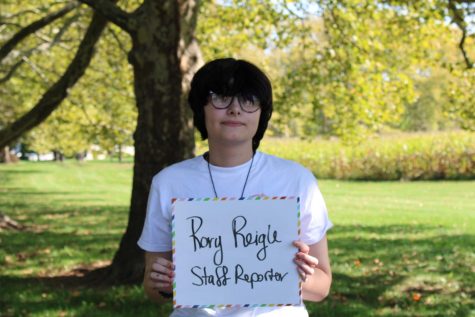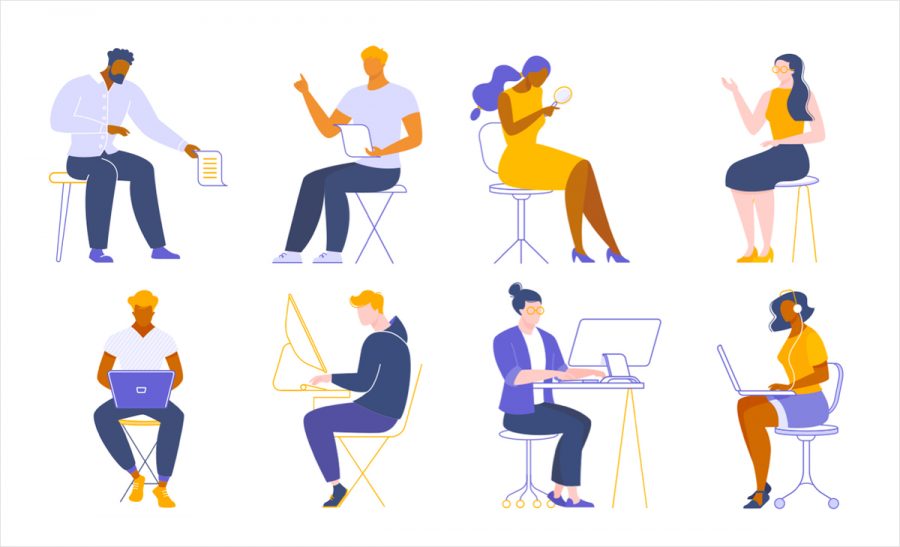As Pandemic Looms, Mental Health Takes a Backseat
With the pandemic’s urgency regarding physical health, it’s difficult for mental health to garner the same attention, especially in a school setting.
As the 2020-2021 school year approached, many were unsure what to expect. Through 2020’s loss of “normal” schooling, students were robbed of the critical routine and structure that they needed in their day-to-day life. Nearly every aspect of the routines we’d been accustomed to in our schooling lives had been upended. But after extensive planning, Southern Lehigh students finally had the opportunity to attend in-person instruction.
Such a feat would not have been possible without an emphasis on protecting physical health: wearing masks, staying six feet apart, and daily symptom screenings. However, while schools were able to mitigate the spread of physical health issues, mental health issues had inadvertently taken a backseat.
“Mental health is not a top priority because COVID-19 is a physical health pandemic, not a mental health one,” sophomore Caidyn Koppenhaver said.
It’s tough to say whether the reopening plan helps or hurts the mental health of students; like most new systems in response to the pandemic, it’s simply another “different” experience for students. While some students feel as though hybrid schooling was a saving grace for their mental well-being, others find learning in an online environment to be quite the challenge, both mentally and academically.
A study from Active Minds found that 27% of high school students cited “difficulties focusing on their studies” as the most stressful part of their pandemic experience. Furthermore, The American Academy of Pediatrics sets the limit for healthy screen time usage at two hours. Online schooling blows that out of the park within two block schedule class periods alone.
“The amount of screen time students spend, whether they’re hybrid or remote, worries me,” school psychologist Mr. Cotie Strong said. “Even when they’re physically in class, they’re still on their screens a lot.”
With all of this time spent online, many students are having difficulty finding time for themselves to get away. This could be why so many are grappling with their mental health at this time. It’s a massive shift in physical routine, making it hard for mental health to remain in check. Overall, the effects of the pandemic will certainly take a long time to get used to, but we still need to be conscientious about our mental health in the meantime.
While it’s easy to look at the student body as singular, the pandemic has impacted everyone differently. Particularly, many neurodivergent students, especially those in need of learning accommodations, face difficulties that come with the loss of structure from online classes. It’s difficult for teachers to offer individualized attention to these students during class.
Oftentimes, students experience issues with motivation due to the new learning environment, leading to an influx of missing assignments from students. However, these difficulties are not divided along academic lines. Even the most highly motivated students are still struggling to deal with this new way of life.
“I feel lucky because in a lot of my classes, the students are still very interactive despite the online format,” senior Michelle Li, who elects to take a demanding course load, said. “But in a lot of classes where participation is low, it’s just so hard to feel like you’re learning. It feels like you’re just sitting there listening, but not retaining the information. Losing that energy of interacting with your peers and your teachers makes it really hard to stay motivated.”
Students aren’t the only ones having difficulties adjusting, though. As everything has changed so much, many of us have been caught in the whirlwind, including teachers, many of whom were forced to deal with a profound lack of engagement, instructing impersonal black screens. Despite these struggles, though, they have persevered, continuing to teach and use their positions to help students in these trying times.
“Like so many, I have had my moments,” high school English teacher Mrs. Lauren Tocci said. “But I’ve also tried to remember the coping mechanisms I’ve learned along the way. If anything has changed this past year is it the reminder of how important it is to reach out, to talk, to share, and to take care of your mental health first.”
So what, if there is any, the solution? Many factors, such as the rate of vaccine distribution, are out of our control. But in terms of what we can control, re-establishing routine into our lives would provide us the structure we need. Additionally, teachers and students should try to empathize with one another instead of pushing each other away. Teachers can extend empathy and leniency, and students should make an effort to engage in class discussions, even in an online format.
“The things happening this school year are so different from what we’ve been prepared for in past years, so really be patient with each other,” Mr. Strong said. “If someone seems to be struggling, asking ‘how are you feeling?’ ‘is there anything I can do to help you?’, those two things go a long way.”
Luckily, people have found other ways to stay connected, even in this unprecedented time. Finding safe ways to gather together can help to safely remedy the physical distance. Additionally, people can connect mentally by attending virtual therapy, which has been made more accessible because of the pandemic.
Nobody knows exactly when things will go back to normal. But at the end of the day, students, teachers, administrators: we’re all going through it. The least we can do is make sure nobody feels as though they’re going through it alone.

Senior Rory Reigle is a third-year staff reporter for the Spotlight. Rory participates in GSA, and enjoys writing, reading, and painting in their free...


